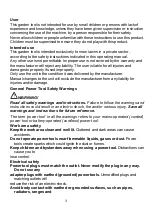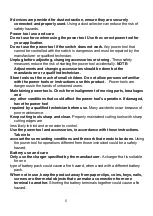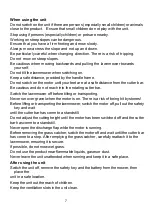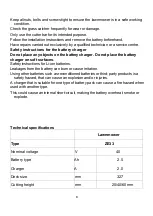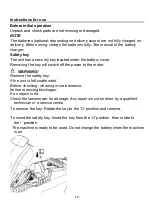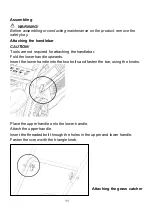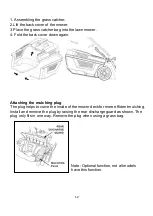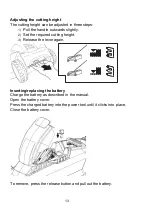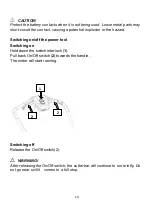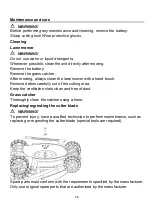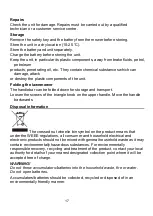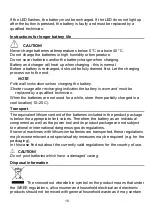
4
refrigerators.
There is an increased risk of electric shock if any part of your body
come into contact.
Do not expose power tools to rain or wet conditions.
Water entering a power
tool will increase the
risk of an electric shock.
Do not damage the cord. Never use the cord for carrying, pulling or
unplugging the power tool.
Keep the cord away from heat, oil, sharp edges and moving parts.
Damaged
or entangled cords
increase the risk of an electric shock.
When operating a power tool outdoors, use an extension cord suitable for
outdoor use
– this will reduce the risk of an electric shock.
If using a power tool in a damp location is unavoidable, use a residual
current device (RCD)
protected supply.
An RCD reduces the risk of an electric shock.
Personal safety
Stay alert, watch what you are doing and be cautious when operating a
power tool. Do
not use a power tool if you are tired or under the influence of drugs, alcohol
or medication.
A
lapse of concentration when using power tools could cause a serious injury.
Use personal protective equipment.
Always wear eye protection. Protective
equipment such as
dust masks, non-skid safety shoes, hard hats and hearing protection will reduce
the risk of injury.
Prevent unintentional starting. Ensure the switch is off before connecting to
a power
source, picking it up or carrying the tool.
Carrying power tools with your finger
on the switch or plugging it in with the switch on, could cause an accident.
Remove any adjusting key or wrench before turning the power tool on.
A
wrench or key left
attached to a rotating part of the power tool could cause an injury.
Do not overreach. Always keep proper footing and balance, ensuring you are
in control of the
power tool.
Do not wear loose clothing or jewellery. Keep your hair, clothing and gloves
away
from moving parts.
Loose clothes, jewellery or long hair could get caught in
moving parts.
Содержание 845-740V90
Страница 1: ...0 ...




